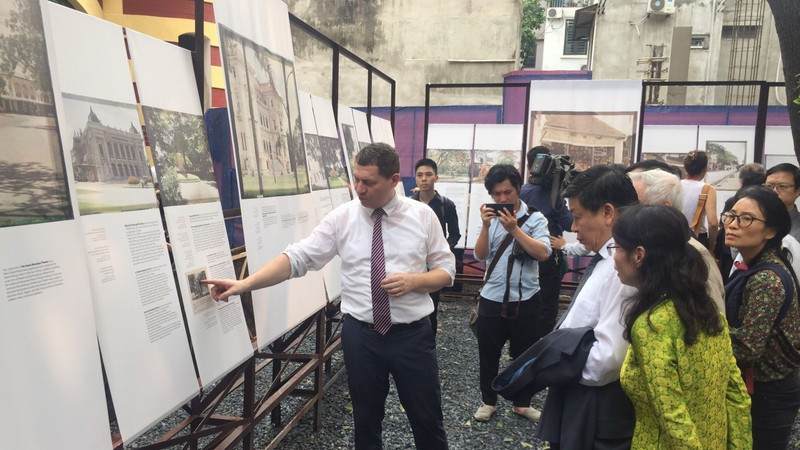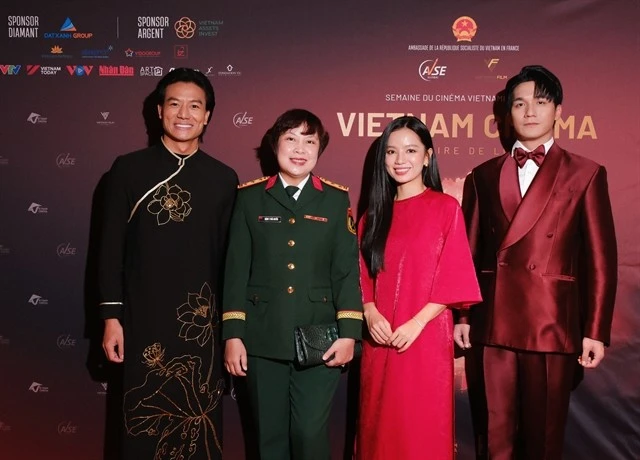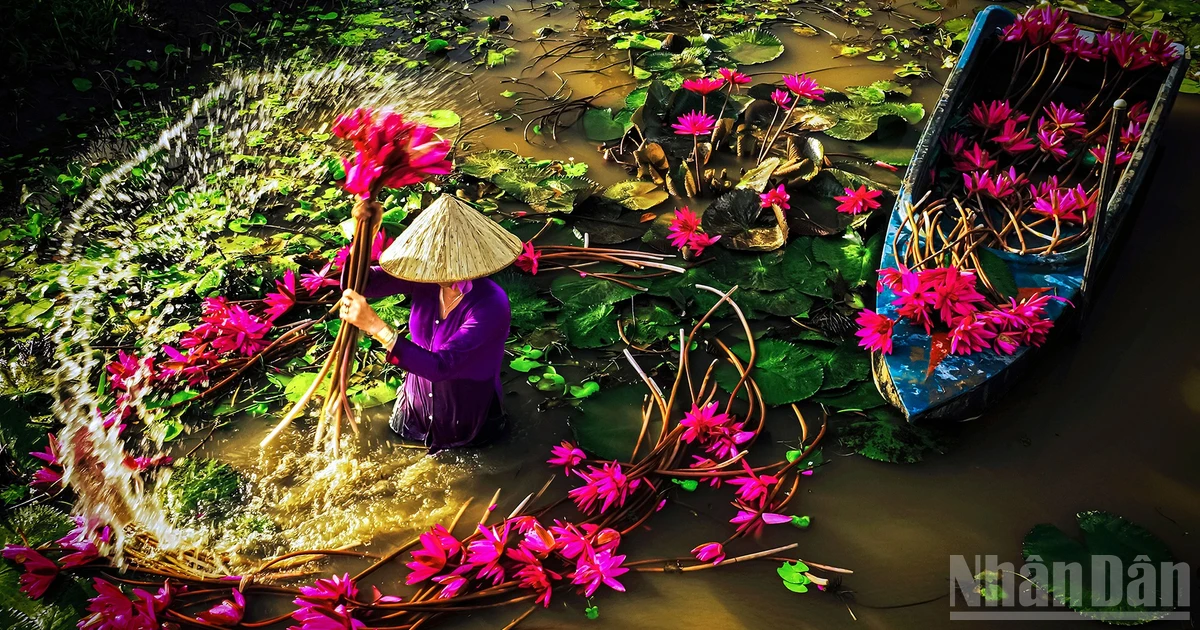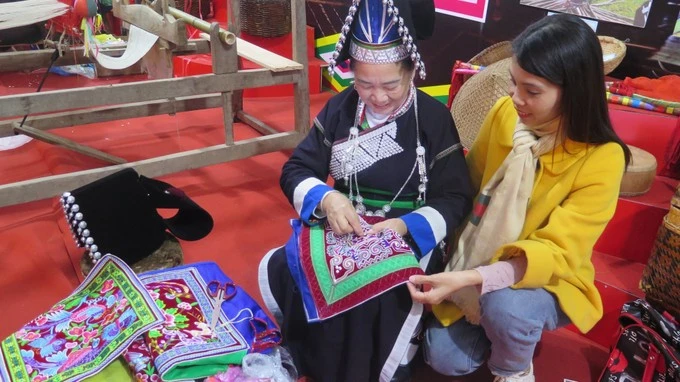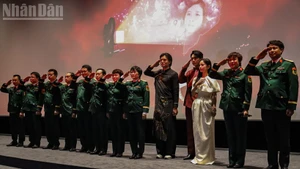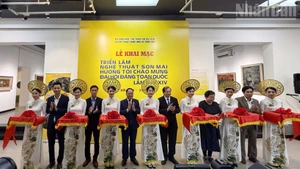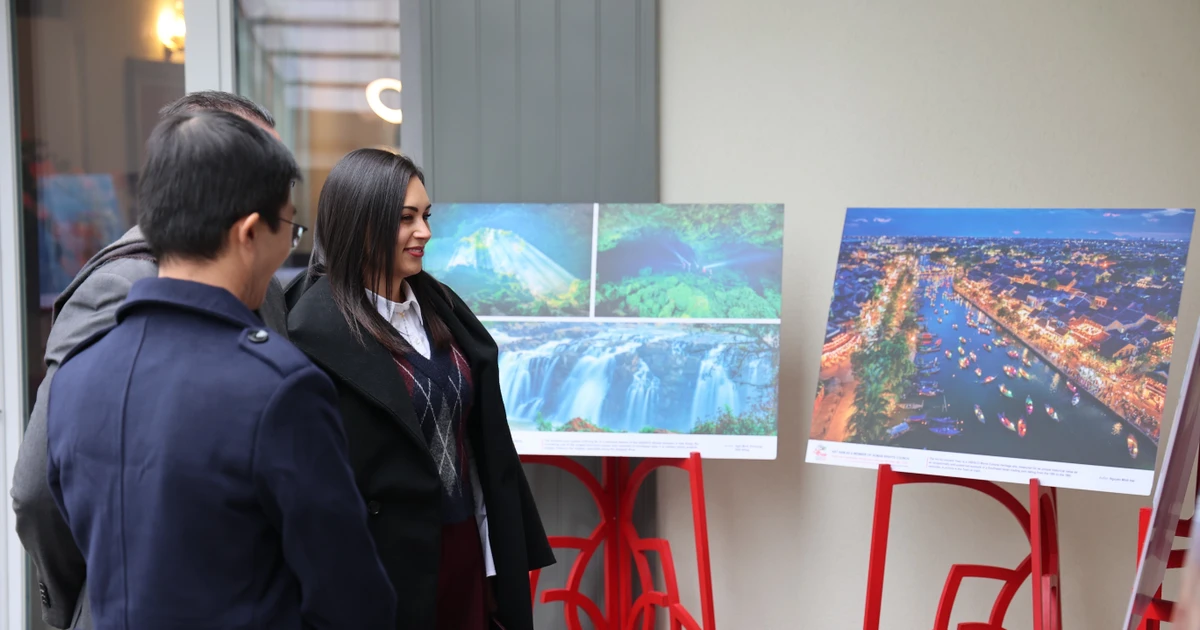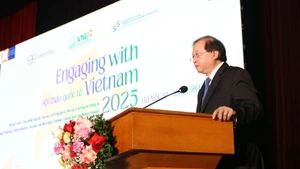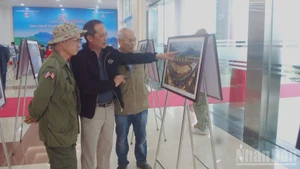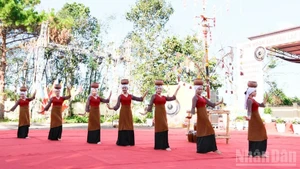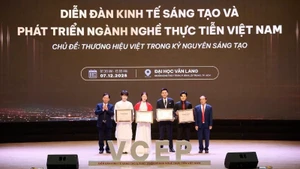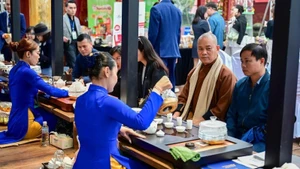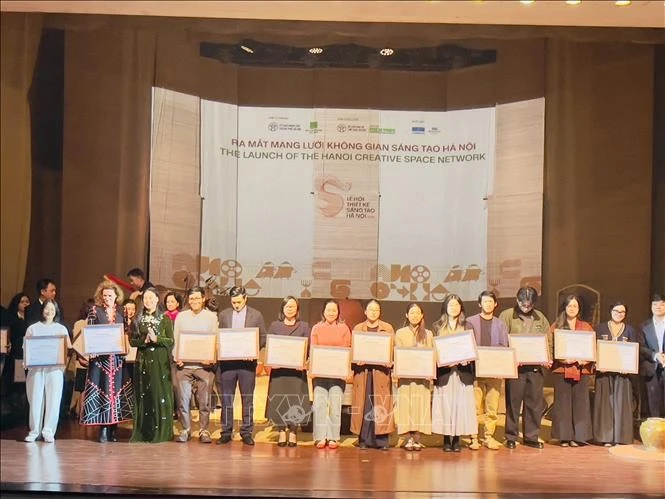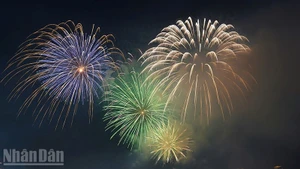The event was jointly held by the authorities of Hanoi as well as France’s Île-de-France on the sidelines of the Vietnam-France decentralised cooperation conference.
In the early 20th century, from a typical oriental city, Hanoi underwent dramatic changes after embracing many aspects of Western culture.
The photos on display were taken by Léon Busy between 1915 and 1921 and were the first colour photos about Hanoi.
The photos offer the public different views of Hanoi, from its streets to historical sites such as the Ngoc Son Temple and Quan Thanh Temple, as well as the lives of local residents.
The most prominent detail in such photos is the change of Hanoi when Western elements began to appear in the streets and old buildings.
Such elements included the large chandelier imported from France at Quan Thanh Temple, pulled rickshaws, newspaper posters in French, or the images of Vietnamese girls with macaron hairstyle wearing big-zip shoes like those in French fashion magazines in the 1910s.
The photos also provide a glimpse at the buildings constructed by the French in Hanoi, many of which still exist today such as the Opera House and Palace of the Governor-General of Indochina (now Presidential Palace).
Such photos are displayed in a space steeped in French culture - the villa at the corner of Tran Hung Dao Street and Hang Bai Street, which is the first French villa to have been renovated with the assistance of Île-de-France.
In the future, Hanoi and the French capital region will continue to collect, exhibit, and introduce materials about the formation of the French quarter in Hanoi and cultural influence between the two countries in the early 20th century.
The event was jointly held by the authorities of Hanoi and France’s Île-de-France on the sidelines of the Vietnam-France decentralised cooperation conference.
In the early 20th century, from a typical oriental city, Hanoi underwent dramatic changes after embracing many aspects of Western culture.
The photos on display were taken by Léon Busy from 1915 to 1921 and they were the first colour photos about Hanoi.
The photos offer the public different views of Hanoi, from its streets to historical sites such as the Ngoc Son Temple and Quan Thanh Temple, as well as the lives of local residents.
The most prominent in such photos is the change of Hanoi when Western elements began to appear in the streets and old buildings.
Such elements included the large chandelier imported from France at the Quan Thanh Temple, pulled rickshaws, newspaper posters in French or the images of Vietnamese girls with macaron hairstyle wearing shoes with big-zip shoes on French fashion magazines in the 1910s.
The photos also provide a glimpse at the buildings constructed by the French in Hanoi, many of which still exist today such as the Opera House and Palace of the Governor-General of Indochina (now Presidential Palace).
Such photos are displayed in a space steeped in Frenchness - the villa at the corner of Tran Hung Dao and Hang Bai Streets, which is the first French villa renovated with the assistance of Île-de-France.
In the future, Hanoi and the French capital region will continue to collect, exhibit and introduce materials about the formation of the French quarter in Hanoi and cultural influence between the two countries in the early 20th century.
